Kmart, Big W, Target: Low stock months after stores said shelves should be full
Kmart said its stores would be “back to normal by July”. It’s now August and shelves are still empty and customers are increasingly frustrated.
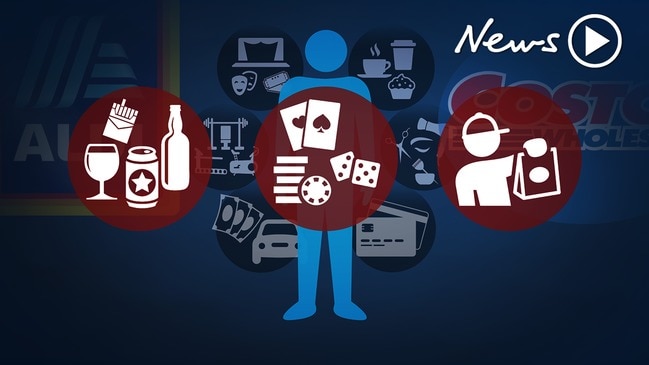
Mansur had tried several Kmarts to find what he was looking for. All had come up wanting.
Starting close to his home in Sydney’s south west he’d now found himself in the city’s eastern suburbs, 30 kilometres away.
“We’re looking for home stuff and things for the baby and they just don’t have enough,” he told news.com.au while browsing the distinctly bare shelves at the store in Westfield Eastgardens.
“It’s difficult to find anything in the Kmart in Bass Hill. It looks like it’s closing down.”
Kmart, as well as other big retailers, have struggled to keep the shelves stocked for months – since at least April.
The discounter had told shoppers online since May that “we expect stock availability to normalise by July”.
In the last couple of days that advice quietly changed to “August”.
News.com.au has visited multiple Kmart stores, as well as Big W and Target, and given August started this weekend it seems highly unlikely the empty shelf issue will be resolved imminently.
And worryingly, a problem that began with homewares, now seems to be spreading to clothing, in particular underwear with shelves once full of bras now half empty.
Neither Kmart nor Target, both owned by Wesfarmers, replied to news.com.au’s questions. Big W said it had seem a “surge in demand” but hoped for a “full recovery” by September.

Another shopper at Kmart in Eastgardens, close to Sydney’s famous beaches, said she was on a fruitless search for pillowcases.
“It’s been really difficult. At the store in Bondi, the shelves are empty.”
Her boyfriend worked for Kmart, she said, and there had been “lots of complaints” from customers.
Eliana Piazza, from Bondi, was searching for curtains. Finally, they’d found one in the right size in Kmart after searching in multiple other stores including the nearby Big W.
“It’s frustrating but what can you do about it? You just have to adapt,” she told news.com.au.
Her partner Andrew was blunter about the situation: “Look at this place, it’s….” and he then said an expletive that began with an “s” and ended with “house” to vividly describe the patchwork of emptiness around them.
STORE STRUGGLING THE MOST
So how bad is the issue? It varies between stores and sections.
Some retailers have lots of one item while another retailer will have very little. And certainly, some stock is coming through, but seemingly in dribs and drabs.
In news.com.au’s survey – which bear in mind is a snapshot rather than a peer reviewed paper – all discounters had gaps. However, Target seemed to have fewer than Big W which in turn was in better shape than Kmart.
Across the board, kitchenwares, home appliances like toasters and kettles, decorative items for the homes, bikes, furniture and Manchester were in short supply.
Generally, clothes, shoes, books and consumer products such as packaged food and cleaning materials, were more numerous.
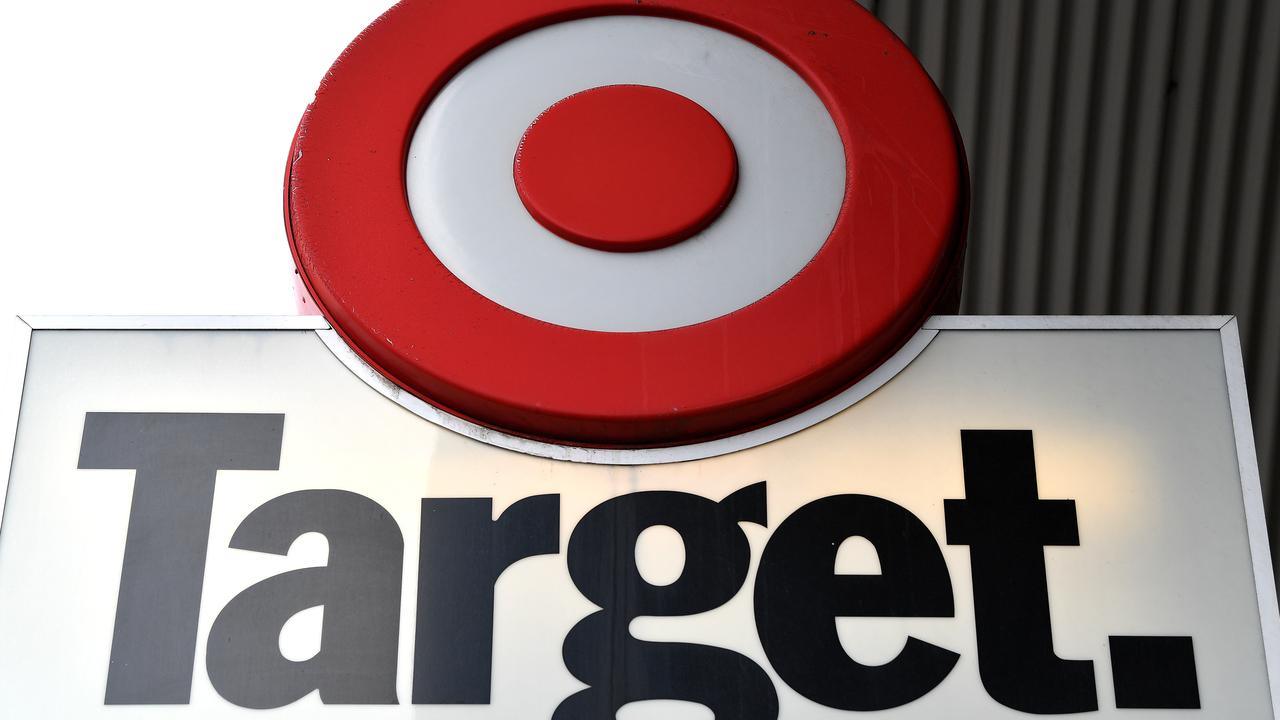
RELATED: Which Target stores are closing?
Woolworths’ owned Big W seemed to be doing better on kitchenware like mugs. But the part of the store usually reserved for outdoor furniture was a gaping hole filled with a single patio set and some stacked up chairs.
Its large office section – a similar area does not exist in Target or Kmart – had been cleaned out of items like printers.
A number of kitchen appliances were in stock, but these seemed to have been spaced to fill the gaps where other items should be.
A Big W spokeswoman told news.com.au that COVID-19 had created an “earlier than usual surge in demand” for some apparel and furniture lines leading to shortages.
“As we continue to see a steady demand for products that are essential for families, we expect customers to see an improvement in stock levels from mid August, with a full recovery by early September across all departments.”
RELATED: Ikea busy during COVID-19 – but where’s all the stock?
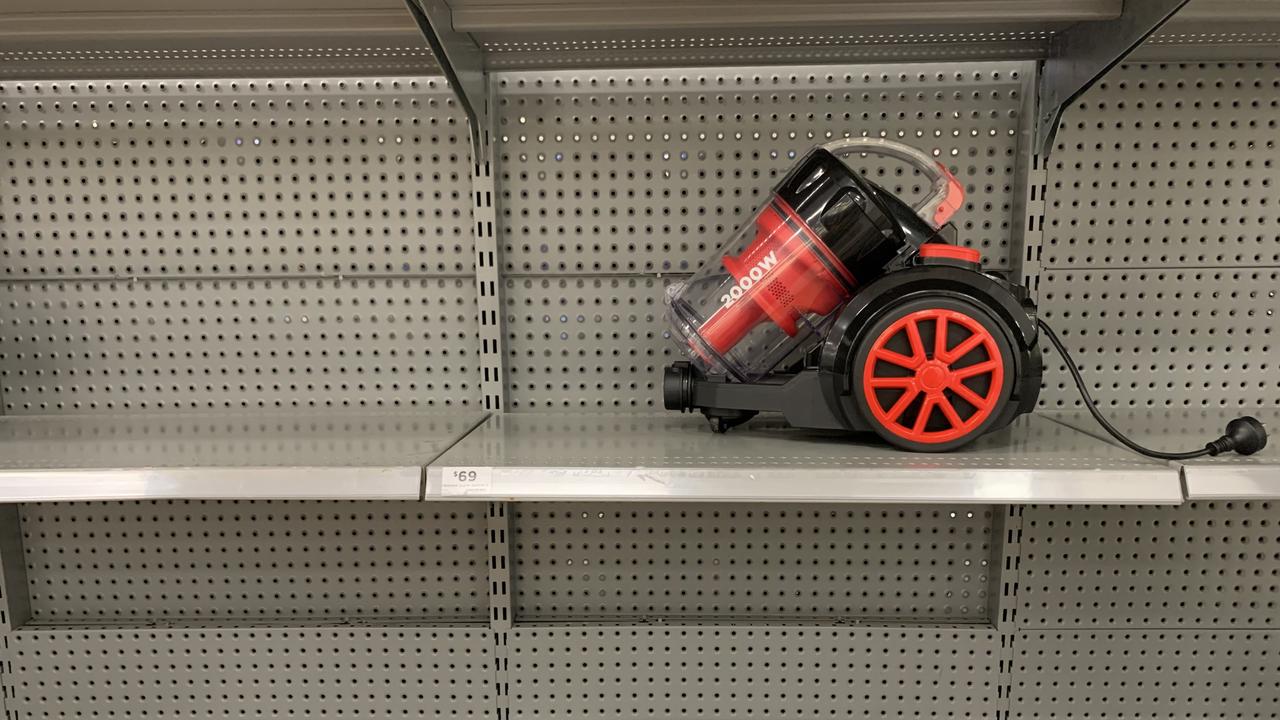

Women’s lingerie was looking somewhat threadbare in terms of stock with barely a bra to be found at Big W.
The supply of clothes has generally held up during the pandemic but there was a similar sight in Kmart with a lack of lingerie and some shirts.
Elsewhere in Kmart, furniture was found wanting; storage was scare, electricals were almost absent and smelly candles were kaput.
A whole heap of microwaves had turned up and some bedding, but elsewhere the kitchen department was a desultory vista of almost or totally bare shelves.
KMART COULD HAVE PARTICULAR ISSUE
Queensland University of Technology retail expert Professor Gary Mortimer said Kmart may have a particular problem as they stock more private label and fewer big brands that have their own supply chains.
“An expanded private label product strategy is smart as it delivers retailers higher margins and protects against competition.
“However, there is risk in failing to manage the composition of range and supplier base. If you increase the range of private label products you sell and your suppliers can’t supply, you end up with empty shelves,” Prof Mortimer said.
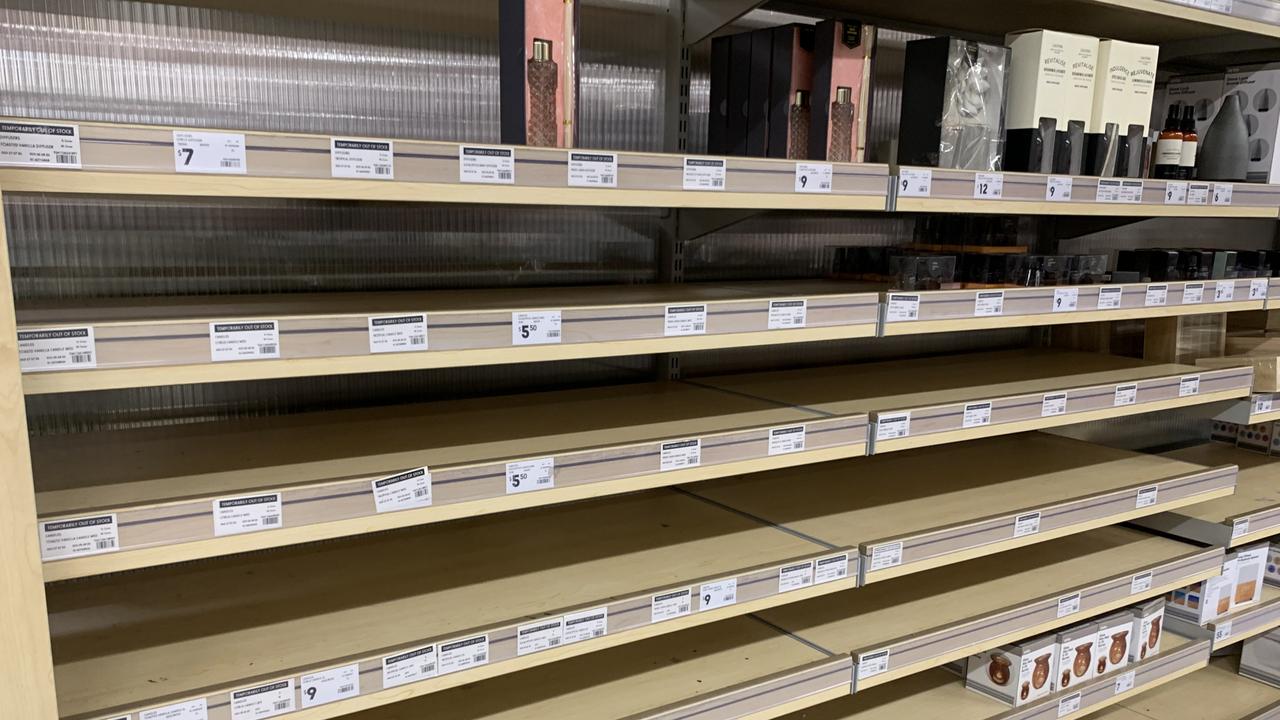

Speaking to news.com.au in May, when stock levels in stores were first becoming an issue, Monash Business School’s Professor Dayna Simpson said stores were struggling more than supermarkets because so much of what is on the shelves at the discounters was imported.
Intercontinental supply chains that deliver huge amounts of cheap products are also complex and prone to shocks out of retailers’ control. Coronavirus has provided precisely that shock.
“Any production that needs lots of human labour is an issue right now,” said the logistics academic.
“Some of these facilities have relied heavily on migrant labour and many of those people haven’t been able to cross borders to get back to work.”
Retailers were also unwilling to increase their cost of doing business – and likely put up prices – just to fill an awkward empty shelf, said Prof Simpson.
“They’re not about to put a bunch of bikes on a plane. That’s expensive so they’ll use the old-fashioned low-cost way on a ship which will take longer.”
There have been calls to source more products from Australia to squash the supply chain but that would lead some products to rise in price. Although Big W said 60 per cent of its Manchester lines and much of its home storage is produced domestically.
RELATED: Kmart, Big W, Target can’t keep shelves full


STOCK DOUBLE TROUBLE
Some departments have suffered from a double whammy of increased demand and more erratic supply chains.
Sales of office equipment have soared as people work from home but shipping in more printers is taking time, which explains Big W’s depleted office section.
Similarly, furniture has been in high demand as Australians nest at home during lockdowns.
A report by professional services firm PwC from earlier this year found the constrained supply of Chinese manufactured goods could lead to overall revenue losses of 10 per cent for Australian retailers this year.
RELATED: Intriguing new format Kmart being trailed in US
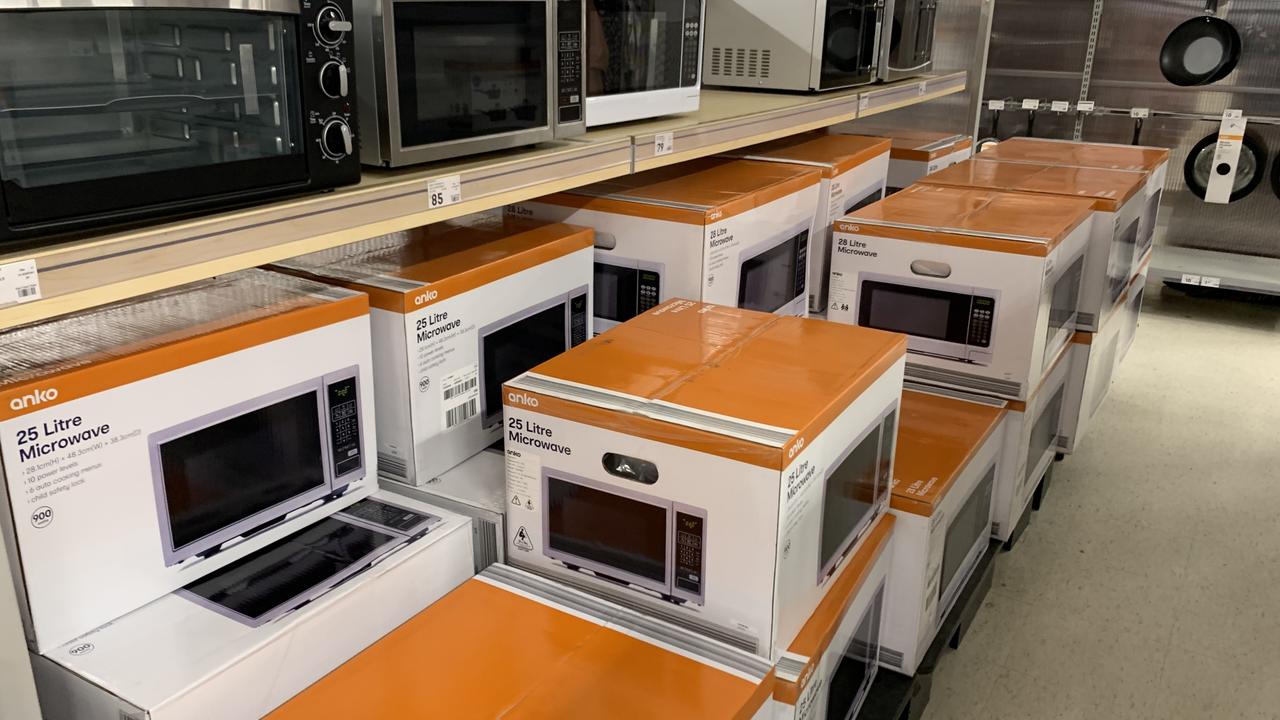
Ms Piazza, shopping at Kmart in Eastgardens, was sanguine about the shortages.
“This is just COVID though right? And we haven’t even had it as bad here as in other countries.”
Nevertheless, she said retailers could help customers better. More could allow you to search for items online and then see if it was available in a certain store so you wouldn’t have a wasted trip.
If they don’t, Ms Piazza said, empty shelves could send more people to the internet.
“Online was already taking over and this lack of product will only push that even further.”
benedict.brook@news.com.au | @BenedictBrook




